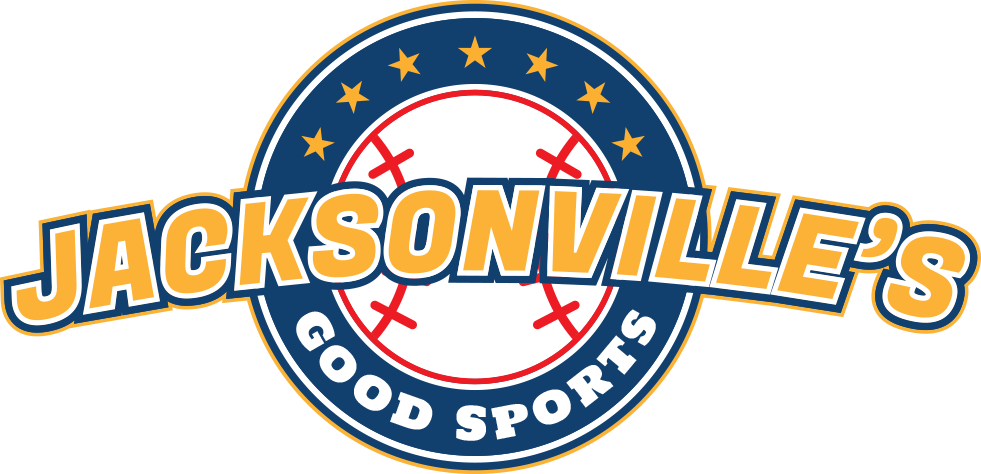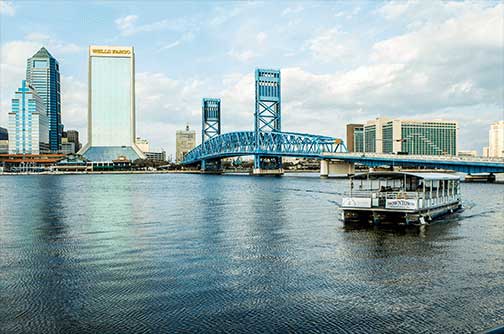



This is a story for sports fans. And music fans. And history buffs. And skateboarders.
Actually, it’s really a story for everyone who appreciates history. From baseball history to musical moments that changed the world, from radical ideas in recreation to classic bowl games, it seems that everything that could happen just happened to happen in Jacksonville.
Explore the city and you’ll find several places where sports have intersected with history. Some have been modified, some have been completely replaced, but each continues to offer visitors myriad reasons to appreciate Jacksonville’s incredible past.

Since its inception in 1946, the Gator Bowl has seen its fair share of routs, incredible comebacks and historic wins. One of the most well-known took place just three years after the Gator Bowl began, when nearly 40,000 fans arrived to witness the Clemson Tigers edge out the Missouri Tigers by a single point in 1949.
That thrilling finish certainly wasn’t the last time the Gator Bowl found fans on the edge of their seats. On December 29, 1978, legendary Ohio State coach/hothead Woody Hayes was in Jacksonville hoping to take home the Gator Bowl trophy. But when Hayes punched a Clemson player who intercepted an Ohio State pass, it was disgraced former Coach Hayes who flew back home to Columbus. On the flip side, on January 1, 2010, more than 80,000 fans came to the Gator Bowl to see Bobby Bowden (377–129–4) coach his final game for FSU. True to form, the Seminoles won.
But the Gator Bowl meant more than good sports. It meant music. In May 1955, 20-year-old Elvis Presley got fans all shook up when he closed his Gator Bowl show by saying, “Thank you very much, ladies and gentlemen. And girls, I’ll meet you backstage.”
Taking him at his word, hundreds of teenage girls clambered onto the stage, raced after Elvis and tore his shirt off before he found sanctuary beneath the bleachers. The pandemonium started a chain reaction that led to Elvis’s superstardom. First, it caught the attention of Tom Parker who became Presley’s manager and vowed to turn the regional act into a national one. Second, Mae Boren Axton, a Jacksonville English teacher/PR agent/promoter/songwriter who had worked with Elvis and introduced him to Parker, told him she’d write his first million seller. A few months later she and her friend Tommy Durden wrote “Heartbreak Hotel” in the living room of Mae’s Jacksonville home. Recorded by Elvis in January 1956, it sold far more than a million copies and was at the top of the charts for seven weeks.


Before Jackie Robinson broke baseball’s color barrier in 1947, the sport had a professional league for white players and two leagues for black players: The Negro American League and the American Negro League.
Representing the city was the Negro American League’s Jacksonville Red Caps, employees of the East Coast Railroad, who played at the J.P. Smalls Stadium, the city’s first municipal recreational field. Starting in Jax in 1938 with a 3-4 season record (an admittedly short season), they moved briefly to Cleveland and then back to Jax in 1941 where their record improved to 8-10 before dropping to 2-6 in 1942. Shortly after, they dropped out of the league.
But it was the Red Caps’ desire to participate in a sport that denied them entry that won them everlasting respect. In 2008, the Pittsburgh Pirates and Tampa Bay Rays paid tribute to the teams of the Negro Leagues by wearing the uniforms of the Jacksonville Red Caps and the Pittsburgh Crawfords. With that display of public recognition, the Red Caps won the respect of a new generation of fans.
Although other legends including Hank Aaron and Satchel Paige would play here—and the original stadium would be renamed, razed and replaced over time—in 2006 the J.P. Small Memorial Stadium re-opened to showcase the city’s pride in sports, history and the community.
To fully appreciate the importance of this field of dreams, stop in the Durkeeville Historical Center across from J.P. Smalls Memorial Park. An exhibit reveals more of the stadium’s history, which included its share of major league action. After the turn of the 20th century, the New York Giants, Brooklyn Dodgers, Philadelphia Athletics and Pittsburgh Pirates held their spring training at the ballpark.


Back in the mid-1970s when I got my first skateboard, it was an unvarnished piece of wood mounted atop roller skate wheels. It was challenging to ride, to say the least, but a pleasure to take a corner so fast that sparks literally flew from the metal wheels.
Though my skateboard was basic, the resurgent popularity of skateboarding at the time led to breakthrough innovations in the sport, primarily skateboards constructed of lighter woods, plastic or fiberglass and equipped with urethane wheels that held a far better grip and didn’t require a fire suppression system.
Enhancing the sport even more were parks that gave skateboarders hills, ramps, moguls, drops and sweeping curves to test every ounce of their agility and reflexes. The first skatepark in America—actually, the skatepark listed in the Guinness Book of World Records as the World’s Oldest Skatepark—is Kona Skate Park, located in Arlington, a neighborhood just east of Downtown Jacksonville.
Opened in 1977, it is celebrating its 40th anniversary in 2017.
Considered a legend among skaters, it’s regularly placed atop America’s “must-skate” parks, remaining as popular now as it was at the height of the initial skateboarding craze. Kona is featured in the best-selling “Tony Hawk’s Pro Skate 4” video game, seen in documentaries and was mentioned in the film Lords of Dogtown. Among its legendary features are the Snake Run (on every skater’s bucket list), Tombstone (a six-foot vertical wall a top of a 12-foot deep bowl), the Kidney Pool (site of the Bowl Rider’s Cup competitions) and the East Coast’s largest vertical ramp.
To celebrate its 40th anniversary, in June the world’s oldest skatepark held a birthday bash which brought out skateboarding legends Tony Alva, Christian Hosoi, David Hackett, Steve Olson, Steve Steadham, Dave Duncan and Mike McGill.
To ensure it’s ready for the next wave of skaters, Kona is planning major renovations that may include venues for competitive leagues and an amphitheater for competitions among amateurs and professionals.
While it continues to attract the very best in the sport, Kona Skatepark is really a place where everyone is welcome. All you need is a skateboard, a scooter and then add a helmet and a desire to have fun.
Although Jacksonville has decades of sports history behind it, the future is bright.